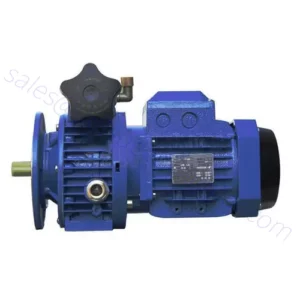A mechanical variator, also recognised as a mechanical variable speed drive, is a gadget applied to fluctuate the pace of a mechanical technique with out relying on electrical components or power. It operates centered on mechanical principles and mechanisms. Even though there are many forms of mechanical variators, I will supply an overview of one typical example identified as the cone pulley variator.
The cone pulley variator consists of two conical pulleys that are related by a belt or a chain. Just about every pulley has multiple techniques or grooves of diverse diameters. The belt or chain can be moved between diverse grooves on the pulleys, properly switching the effective diameter of the pulleys and altering the pace ratio involving them. Here is a action-by-move clarification of how a cone pulley China variator manufacturer operates:
one. Initial Configuration: The belt or chain is positioned on the smallest grooves of both equally pulleys, resulting in the smallest successful diameters for both equally pulleys. This configuration supplies the maximum velocity ratio, where by the pushed pulley rotates more quickly than the driving pulley.
two. Velocity Variation: To alter the velocity, a single of the pulleys is moved, China variator manufacturer ordinarily by sliding it alongside its axis. This movement brings about the belt or chain to shift to larger grooves on equally pulleys. As a end result, the powerful diameters of each pulleys boost, altering the speed ratio in between them.
three. Adjusting Pace: By changing the placement of the pulleys and the belt or chain, distinct velocity ratios can be attained. Transferring the belt or chain in the direction of larger sized grooves on the driving pulley and scaled-down grooves on the driven pulley decreases the velocity ratio, slowing down the driven pulley relative to the driving pulley. Conversely, going the belt or chain towards more compact grooves on the driving pulley and much larger grooves on the pushed pulley boosts the velocity ratio, speeding up the driven pulley relative to the driving pulley.
4. Ongoing Variation: The mechanical variator will allow for steady adjustment of the speed ratio in the vary supplied by the grooves on the pulleys. By sliding the pulleys and shifting the belt or chain position, the pace of the driven process can be various easily and steplessly.
Mechanical variators are utilised in various apps where velocity control is demanded, these as machine tools, conveyors, and industrial gear. Whilst the cone pulley variator is 1 example, there are other forms of mechanical variators, including disk variators, China variator supplier roller variators, and growing pulley variators, just about every with its have style and operational rules.